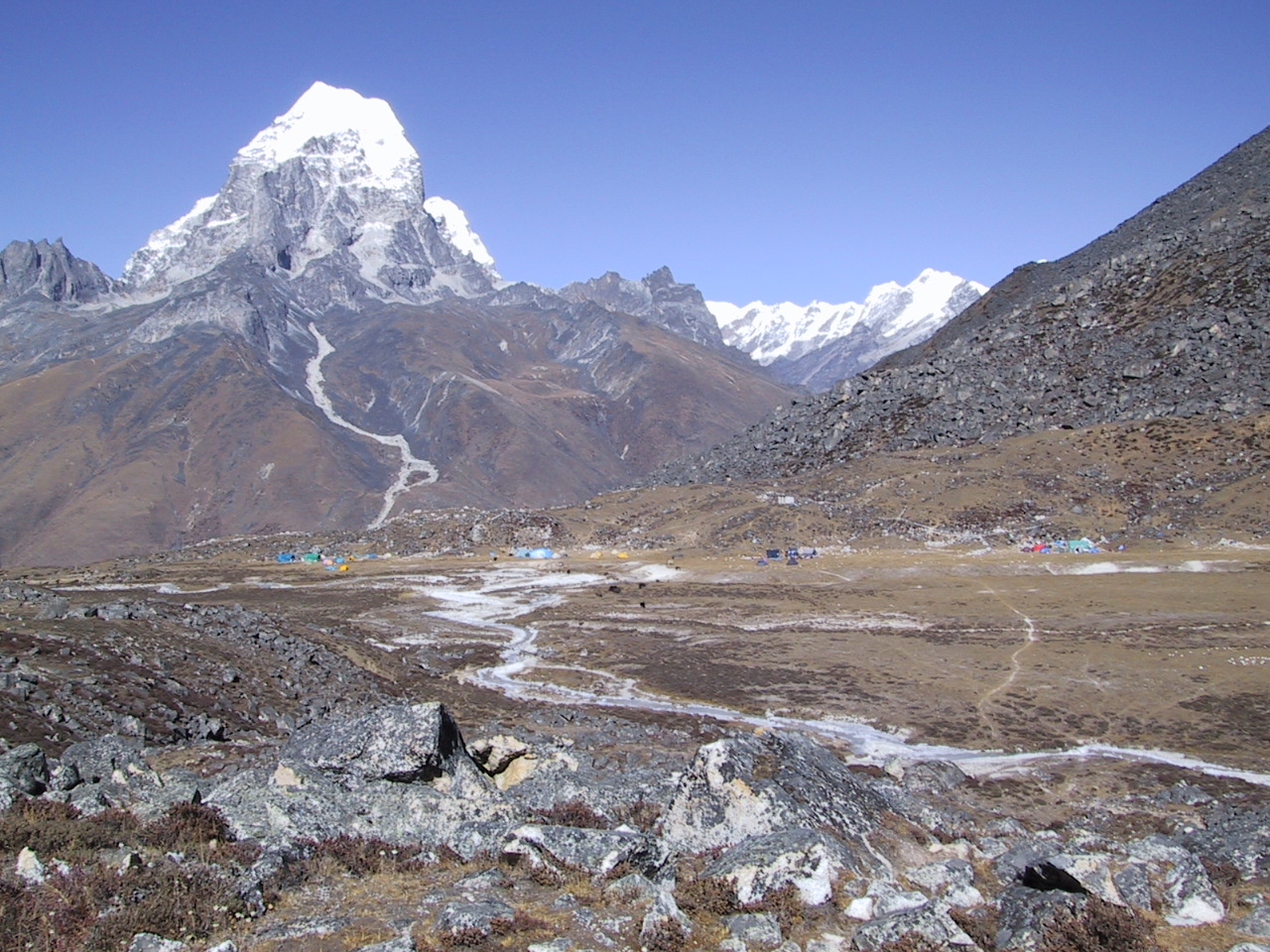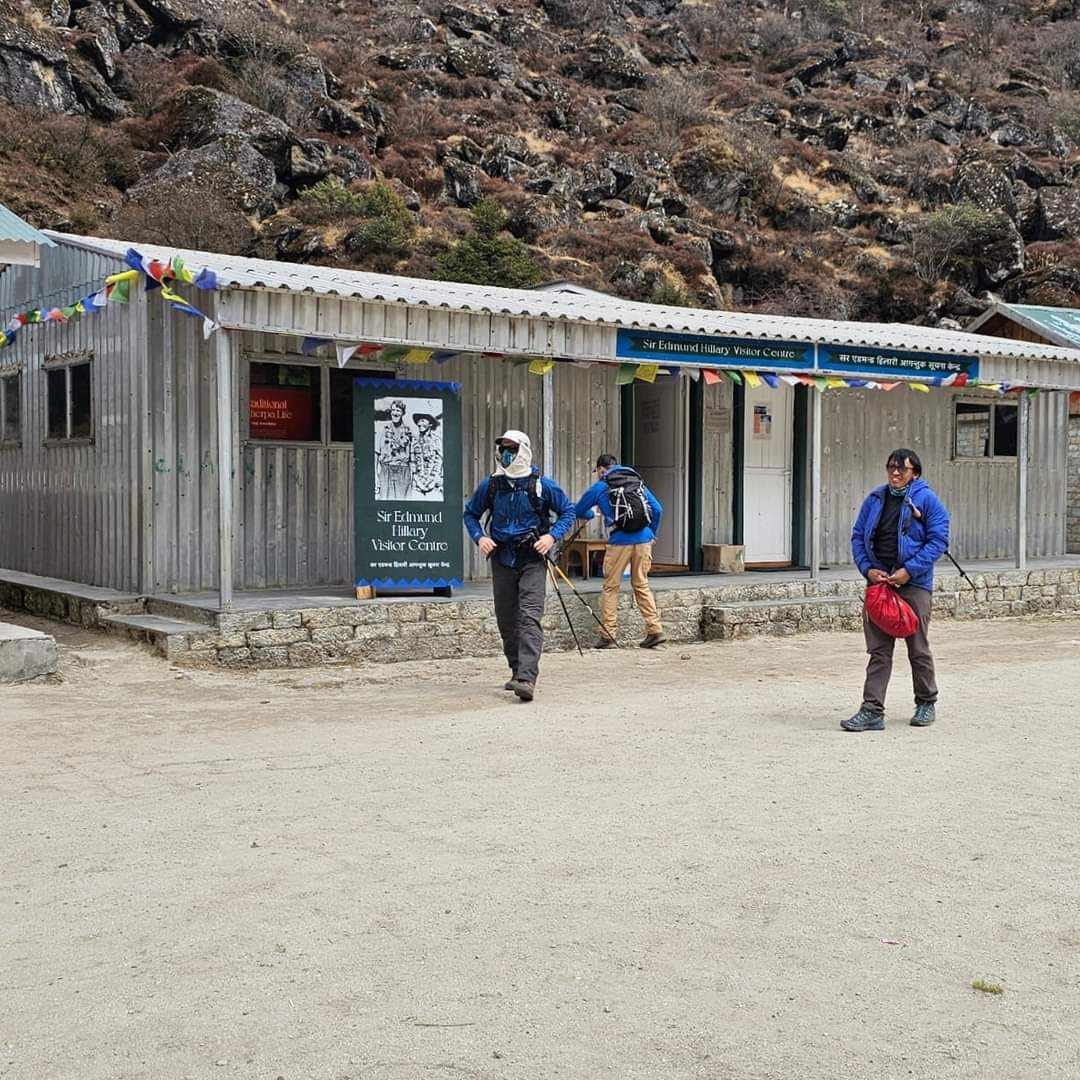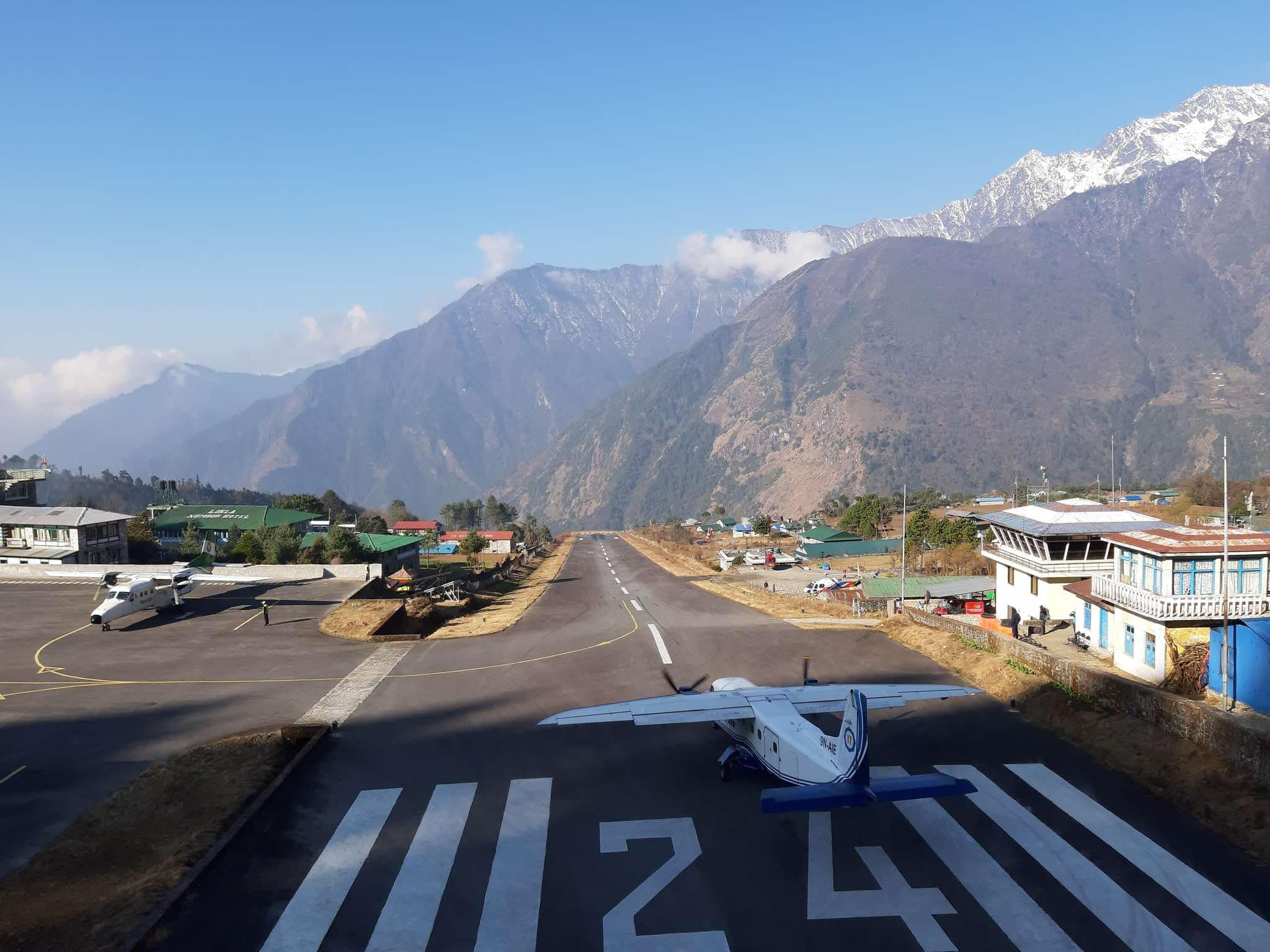In the annals of the history of Nepal’s aviation lies an understated story—one often eclipsed by the towering fame of Lukla Airport. Before Lukla cemented its reputation (albeit falsely) as the “world’s most dangerous airport,” another airport sought to defy the odds at a staggering altitude: the Mingbo Airstrip. It was an audacious project that was conceived not out of convenience but necessity.

Photo: Ivan G. Somlai
The Mingbo Airstrip came into being through the vision of Sir Edmund Hillary, a name synonymous with ambition, exploration, and the modernization of the Khumbu region. Constructed in the shadow of Ama Dablam, one of the most picturesque yet daunting peaks in the Himalayas, Mingbo airstrip stood at an elevation of 4,650 meters (15,000 feet). However, the location of the airport wasn’t merely an exercise in pushing boundaries of where an airport could be constructed; it was a mission grounded in purpose and collaboration.
A Collective Effort in the Harshest of Climates
In the 1960s, resources in the Himalayas were scarce, and constructing an airstrip in such an unforgiving environment seemed almost absurd. The construction of the airport, much like Lukla’s construction, took place without any mechanical aid. The collaborative effort (for Mingbo Airstrip’s construction) between scientists, mountaineers, and local Sherpas was more than just an engineering feat; it was a cultural confluence, a melding of Western ambition with local expertise.

Photo: JDrewes | Wikimedia Commons
Hillary, in his autobiography, remarked:
“So at my request, the Silver Hut wintering group put a team of men on to levelling the site at 15,000 feet, chopping off the frozen clumps of snow grass, filling in the worst of the holes, and rolling away the large boulders. Snow sometimes restricted their activity but it rarely lay for long once the sun was shining again. When the strip had been cleared to 400 yards the first landing was made.
When the first landing was made, the aircraft suffered a damage on the tail wheel. At the end where the aircraft were to take off from, there were two large boulders that had to be cleared off. But there was a problem. These weighed several tons. Hillary’s team, alongside local Sherpas, embarked on the Herculean task of removing these boulders. As getting the most promising technology of that time to Mingbo for the exploding the rocks wasn’t viable, ancestral wisdom filled the gaps:
- Breaking Boulders: Mountaineers wielded sledgehammers, attempting to shatter the massive rocks littering the area.
- Sherpa Ingenuity: The local Sherpas, deeply familiar with their land, employed traditional methods. They dug craters beside the largest boulders, inserted long sticks as levers, and used sheer force to maneuver the rocks into these pits, gradually leveling the terrain.

Photo: Chhutin Sherpa | aviospace.org
Getting supplies to the Everest region even till this day is a challenge, thanks largely to the fact that only Short Take-off and Landing (STOL) fixed-wing aircraft fly to Hillary (Lukla) Airport, which is still considered to be the Gateway to Everest. Lukla is perched at an altitude of 2800 meters or so, Mingbo was perched at around 4,600. To give you another perspective, Mingbo Airstrip was imroved to 500 yards, a runway length smaller than Lukla’s.
The Catalyst: A Crisis of Humanity
The driving force behind this airstrip was not simply adventure but a humanitarian crisis. In 1959, following the Tibetan uprising against Chinese rule, waves of Tibetan refugees began pouring into Nepal. Thousands found themselves stranded in the harsh terrain below the village near Mingbo. It was a scene of desperation: yaks slaughtered to stave off hunger, their meat hung out to dry under the unforgiving Himalayan sun.

Photo: Karan Bhatta | aviospace.org
Hillary recognized the dire need for aid. The Mingbo Airstrip was envisioned as a lifeline, a conduit through which supplies could reach these refugees. The Pilatus Porter, a versatile aircraft capable of handling short and rugged runwaysferried essentials—food for the starving. It also supplied materials for constructing Khumjung Secondary School, and other life-sustaining supplies.
A High-Altitude Gamble in the 1960s
Yet, the Mingbo Airstrip was not without its flaws. The very altitude that defined its uniqueness also became its undoing. At 4,650 meters, the thin air posed insurmountable challenges for both pilots and aircraft. The Pilatus Porter, though capable, struggled against the diminished oxygen levels, which affected engine performance and made take offs as well as landings precarious.

Photo: Karan Bhatta | aviospace.org
The aircraft that landed in Mingbo has “two large rocks wedged under the wheels for brakes”. No aircraft maintenance facilities were there and if aircraft encountered any issues while at the airport, getting maintenance personnel would require more than two weeks of trek to get to Mingbo. The dangers of operating out of Mingbo (to Kathmandu) was touched upon by Hillary:
“To my startled eyes the short strip ahead of us seemed quite inadequate for our needs and the hill at the end loomed up with frightening rapidity. At the last moment Captain Schrieber pulled back on the stick and we lifted sluggishly off the ground. Next moment he had tipped up onto one wing to dodge the hill and we were slipping through the gully to the left, to be precipitated out into free air…..”
Much like how the Nepalese government did not have any idea that a helicopter would land at the top of Everest, it didn’t know about Sir Hillary’s aircraft operations in Mingbo either. When the Civil Aviation Authority of Nepal (CAAN) learned about it, it decided to send a personnel to test whether the airfield was worthy of operations. Hillary, in the following passage, gives us a glimpse of how dangerous it was to land into Mingbo:
“As Captain Schrieber headed down there was a fierce sideways gust of wind and the aircraft started sliding towards the left-hand edge of the field. Captain Schrieber’s reaction was immediate – he just dropped the aircraft from thirty feet to land with a huge thud and then rolled upwards close to the rocks on the left-hand side where we stopped safely at the top. We were all severely shaken. The Civil Aviation gentleman staggered out of the aircraft and vomited noisily.”

Photo: Ivan G. Somlai
The airstrip’s potential to serve as a reliable gateway to Everest diminished as such challenges surfaced. compounded. And so, CAAN decided to put a permanent stop to operations at Mingbo Airstrip.
Mingbo vs. Lukla: A Tale of Two Airstrips
If Mingbo was a bold experiment, Lukla was its polished successor. Situated at a lower elevation and blessed with slightly more forgiving conditions, Lukla quickly became the go-to airstrip for adventurers and locals alike. Over time, its reputation for danger grew—its short runway and abrupt drop-offs making it infamous worldwide. Yet, while Lukla continues to garner attention, the story of Mingbo has faded into obscurity, an echo lost amidst the mountains.

Image: Roland | aviospace.org
But Mingbo’s story holds a resonance that Lukla’s cannot replicate. It speaks not of commercial success but of human resilience, of a moment in history where survival and ingenuity converged in the face of insurmountable odds.
The Legacy of Mingbo Airstrip
Today, the Mingbo Airstrip lies dormant, a forgotten relic of a bygone era. Overgrown and unused, it’s easy to dismiss it as a failure. Yet to do so would be to overlook its significance. Mingbo wasn’t just an airstrip; it was a symbol of what can be achieved when necessity drives innovation, when communities come together to address a shared challenge. The airstrip still serves as a place where people put out tents during their trekking expeditions.

Photo: Chhutin Sherpa | aviospace.org
The lessons of Mingbo linger, even if the physical site does not. It reminds us of the fragility and strength of human endeavor in equal measure. In a world obsessed with progress, Mingbo’s brief existence is a poignant reminder that not all successes are enduring, and not all failures are devoid of meaning.
Key Takeaways:
- Humanitarian Drive: The airstrip was born out of necessity to aid Tibetan refugees, showcasing the intersection of aviation and humanitarian efforts.
- Collaboration: The project exemplified how local knowledge and Western resources can merge to achieve extraordinary results.
- Challenges of Altitude: The technical and human limitations posed by Mingbo’s extreme altitude highlight the delicate balance between ambition and practicality.
In revisiting the Mingbo Airstrip, we are reminded of the quiet narratives that form the backbone of history—the stories that don’t make headlines but define the contours of human effort. While Lukla may dominate the limelight, Mingbo’s tale lingers in the periphery, waiting to be remembered, understood, and appreciated for what it was: a fleeting, fragile, and fearless endeavor amidst the grandeur of the Himalayas.
